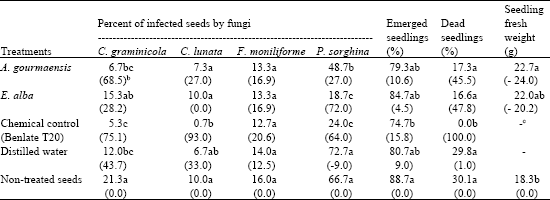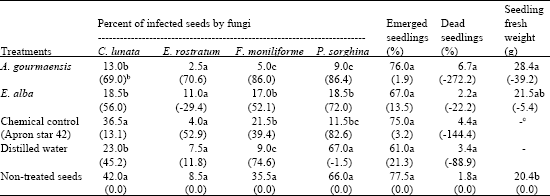Research Article
Effect of Aqueous Extracts of Acacia gourmaensis A. Chev and Eclipta alba (L.) Hassk. on Seed Health, Seedling Vigour and Grain Yield of Sorghum and Pearl Millet
Institut de l`Environnement et de Recherches Agricoles (IN.E.R.A.), 04 P.O. Box 8645, Ouagadougou 04, Burkina Faso
Paco Sereme
Institut de l`Environnement et de Recherches Agricoles (IN.E.R.A.), 04 P.O. Box 8645, Ouagadougou 04, Burkina Faso
Vibeke Leth
Danish Seed Health Centre for Developing Countries (DSHC), Department of Plant Biology, Faculty of Life Sciences, University of Copenhagen, Thorvaldsensvej 40, DK-1871, Frederiksberg C, Copenhagen, Denmark
Philippe Sankara
Université de Ouagadougou, Unité de Formation et de Recherche sur les Sciences de la Vie et de la Terre (UFR/SVT), P.O. Box 7021, Ouagadougou, Burkina Faso












